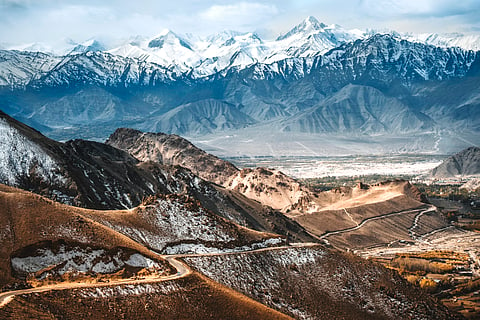

Cold Desert becomes India’s 13th UNESCO Biosphere Reserve
First high-altitude cold desert reserve in the country
Covers Pin Valley National Park, Chandratal, Sarchu and Kibber Wildlife Sanctuary
Home to snow leopards, Himalayan ibex, blue sheep and golden eagles
Around 12,000 residents sustain livelihoods through herding, farming and traditional medicine
India now has 13 United Nations Educational, Scientific and Cultural Organization (UNESCO) Biosphere Reserves, with the UN body on September 27, 2025 designating the Cold Desert Biosphere Reserve as part of its global network. The announcement came during the fifth World Congress of Biosphere Reserves in Hangzhou, China, where 26 new sites were added worldwide.
This is India’s first high-altitude cold desert biosphere reserve and one of the coldest and driest ecosystems in UNESCO’s World Network of Biosphere Reserves. Spanning 7,770 square kilometres at altitudes between 3,300 and 6,600 metres, the site covers Pin Valley National Park and its surroundings, including Chandratal, Sarchu and Kibber Wildlife Sanctuary. It features windswept plateaus, glacial valleys, alpine lakes and rugged high-altitude deserts.
The Cold Desert Biosphere Reserve harbours 732 species of vascular plants, including 30 endemics and 157 near-endemics of the Indian Himalayas. It also shelters iconic wildlife such as the snow leopard, Himalayan ibex, blue sheep, Himalayan wolf, golden eagle and Himalayan snowcock.
The trans-Himalayan region supports around 12,000 residents in scattered villages, dependent on pastoralism, yak and goat herding, small-scale farming and traditional Tibetan medicine. Buddhist monastic traditions and local councils play a key role in managing fragile alpine resources.
Tim Curtis, Director of UNESCO’s Regional Office for South Asia, said: “The Cold Desert Biosphere Reserve is a powerful example of how fragile ecosystems can be protected while supporting the communities that depend on them. This designation reflects India’s commitment to balancing conservation with sustainable development.”
The announcement also coincides with the 50th anniversary of UNESCO’s Man and the Biosphere programme, which promotes conservation, sustainable development and research across 785 sites worldwide.